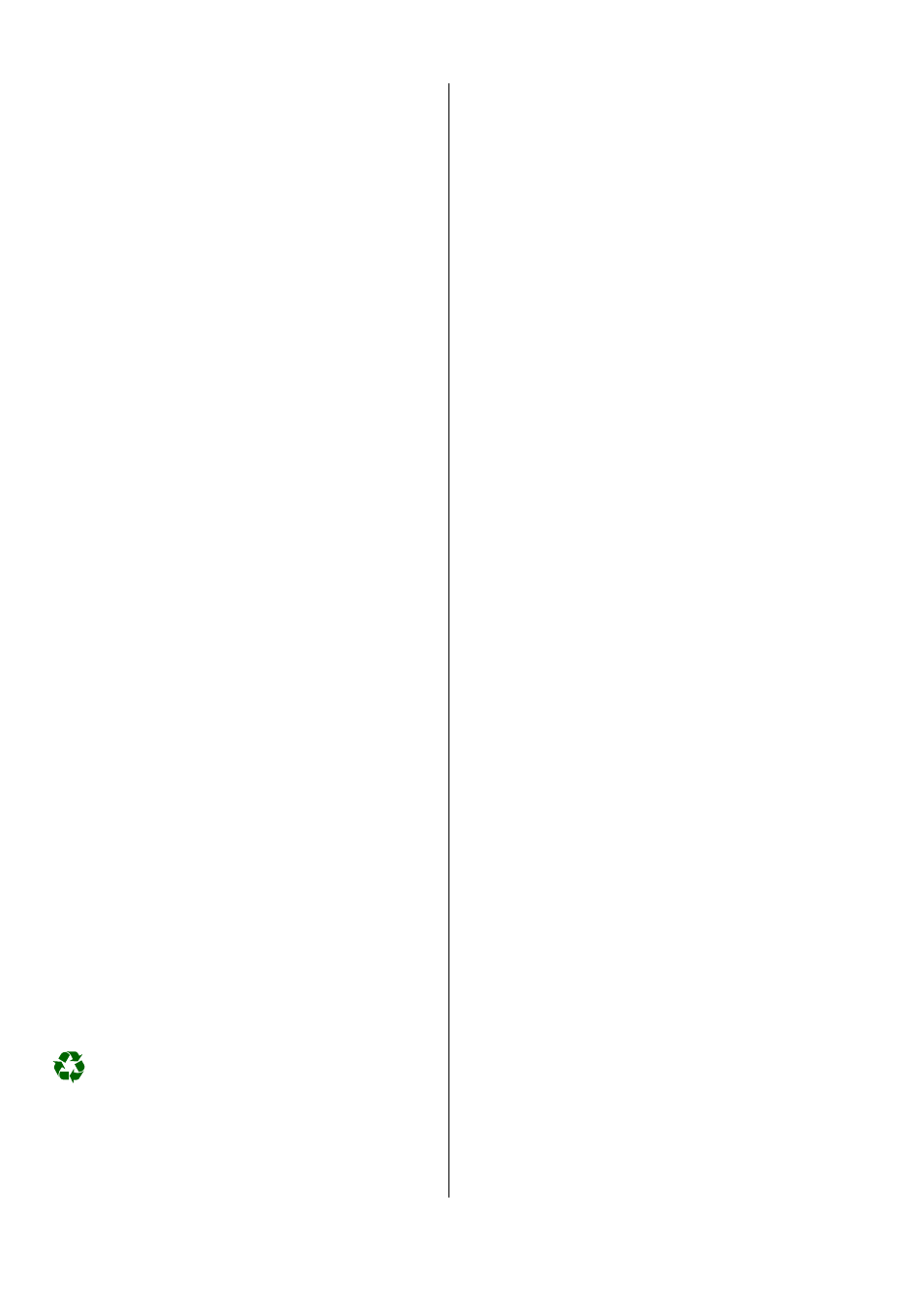Troubleshooting, Maintenance and service – REMKO ETF 240 User Manual
Page 10

10
The unit does not start:
◊ Check the connection to the power supply.
230V / 1~ / 50 Hz.
◊ Check the power fuse installed by the customer.
10 A.
◊ Check the power plug for damage.
◊ Check that the condensation tank has been inserted
properly and is not full.
“Tank full” may not appear on the display.
◊ Check that the microswitch of the condensation tank
is working.
◊ Check hygrostat settings.
The humidity in the setup room must be more than
the humidity of the selected range.
Troubleshooting
The unit was tested repeatedly during production to en-
sure that it is working properly.
However, should problems occur, refer to the following
list.
The unit starts but no condensation forms:
◊ Check the room temperature.
The operating range of the unit is between 6 °C and
32 °C.
◊ Check the humidity.
Minimum 40 % relative humidity.
◊ Check the air intake filter for dirt.
Clean or replace if necessary.
◊ Check the exchanger fins for dirt.
To conduct this test, the unit must be open; it may
only be performed by an authorised service centre.
Maintenance and Service
Regular maintenance and observance of some basic
principles are required to ensure a long service life and
to keep the unit functioning properly.
However, the unit should be inspected at least once a
year and thoroughly cleaned after long periods of use.
All movable parts have a permanent lubrication that re-
quires little maintenance. The entire cooling system is a
low-maintenance, closed-loop system and may only be
serviced by authorised service centres.
The unit is operated with the environmentally-friendly
refrigerant R134 a which does not harm the ozone
layer. The refrigerant/oil mixture in the unit must be dis-
posed of properly in accordance with general regula-
tions and local requirements.
Import information on recycling!
Work on the cooling system and the electrical sys-
tem may only be performed by authorised person-
nel!
*
Cleaning the condenser and evaporator
The unit housing must be open to perform work on
these components; this work may only be performed by
authorised service centres!
◊ Clean the condenser and the evaporator either by
blowing air into the unit or with a vacuum cleaner or
soft brush.
Do not expose it to a direct stream of water.
◊ Keep in mind that the fins are easy to damage or
bend.
◊ Carefully clean the inner surfaces of the unit, the con-
densation tray with hose connection, the fan and the
fan housing.
◊ Reassemble all of the disassembled parts properly.
◊ Perform a functional test and conduct an electrical
safety check!
Before performing any work on the unit, make sure
to unplug power cord!
*
◊ Keep the unit free of dust and other deposits.
◊ Use only a dry or slightly moist towel to clean the
unit.
Do not expose it to a direct stream of water.
◊ Do not use abrasive cleaning agents or cleaning
products containing solvents; only use suitable
cleaning products even when the unit is extremely
dirty.
◊ Check the air intake filter for dirt on a regular basis.
Clean or replace if necessary.
Work on the cooling system and the electrical sys-
tem may only be performed by authorised person-
nel!
*
Before performing any work on the unit, make sure
to unplug power cord.
*
The unit is loud or vibrates, condensation comes
out:
◊ Make sure that the unit is in an upright position on a
flat surface.
◊ Check the condensation tray and the connection
adapter for dirt.
To perform this test, the unit must be open; it may
only be performed by an authorised service centre.
If, after performing these checks, the unit still does not
work properly, please notify an authorised service centre.
